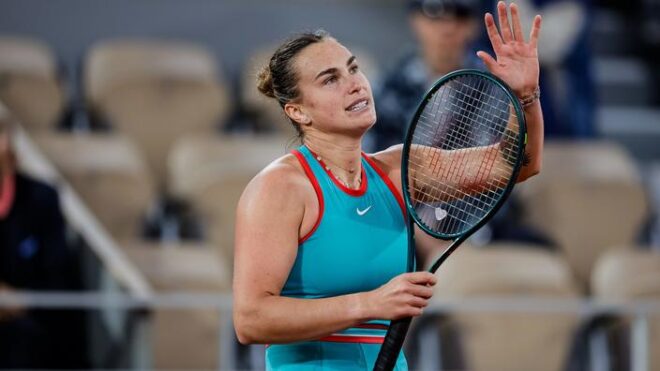
Aryna Sabalenka recorded her second career semifinal result at the French Open by beating eighth-seeded Zheng Qinwen in straight sets on Tuesday (June 3). The World No. 1 will next face her longtime rival Iga Swiatek for a place in the women’s singles summit clash in Paris.
Swiatek, on her part, had weathered a tough three-setter in the Round of 16 against Elena Rybakina on Sunday, but was in red-hot form during her last-eight meeting with Elina Svitolina two days later. The Pole was in sublime form from start to finish, dismantling the Ukrainian in straight sets to reach the semifinals.
Aryna Sabalenka and Iga Swiatek will both be looking to hit top form when they take to the famed terre battue for what will be their 13th career clash. Let’s take a look at three departments of the game where the Belarusian will have to excel to beat the three-time defending champion in the semifinals of the 2025 French Open.
#3 Aryna Sabalenka will need to minimize her fluctuations in level
Aryna Sabalenka hasn’t dropped a single set in her five-match wins in Paris thus far, which have included straight-set routs of quality opponents like Zheng Qinwen and Amanda Anisimova. That said, while the 27-year-old has played some commanding tennis during this fortnight, she has had her fair share of ups and downs.
During her second-round encounter against Jil Teichmann, Sabalenka was quick to fall behind by a break before eventually winning 11 of the next 12 games to complete a routine 6-3, 6-1 win. The top seed then failed to serve out the first set of her Round-of-16 encounter against 16th-seeded Anisimova at 5-4 up. She ultimately won the first set a few games later before securing a 7-5, 6-3 victory in one hour and 34 minutes.
The trend followed during the Belarusian’s quarterfinal match against eighth-seeded Qinwen as the former wasted a break lead and a set point at 6-5 up before winning the opening set tiebreaker. Although it was one-way traffic for her from that point onwards, she can’t afford such lapses in concentration against an opponent of Swiatek’s pedigree, especially on clay.
#2 Aryna Sabalenka will need to win at least 70% of her first-serve points
Aryna Sabalenka hits a serve at the French Open 2025 | Image Source: Getty
Aryna Sabalenka hits a serve at the French Open 2025 | Image Source: Getty
Although Aryna Sabalenka is known for her huge first serve, that part of her game hasn’t fetched her many free points on the terre battue in Paris this fortnight. The World No. 1’s flat delivery was completely neutralized during her last-eight match on Tuesday, as she won just a measly 60% of her first-serve points.
Overall, the three-time Major winner has won just 67.6% of her points on first serve in her five victories at this year’s French Open, with her best performance having come against Amanda Anisimova in the Round of 16 (73%). Needless to say, the 27-year-old will have to do better in this aspect of her game against Swiatek, who is arguably the best returner on the WTA Tour.
Sabalenka, who usually goes down the line on her first serve, will be better off mixing up the direction of her first delivery with some kickers. She will also have to track the Pole’s return position to set up a good follow-up forehand – a ploy that will go a long way in ensuring a prospective win against her opponent on Thursday.
#1 Aryna Sabalenka will need to avoid getting into forehand-to-forehand rallies with Iga Swiatek
Iga Swiatek has been a shadow of her past self in 2025 as she struggles with her playing style and confidence. The fifth seed has also not been on top of her powers at the French Open this fortnight, and she almost lost to 12th-seeded Rybakina on Sunday. However, her prowess during cross-court rallies, especially from her forehand wing, saved her big time against the Kazakh.
Against that background, Aryna Sabalenka will likely have a much better chance of winning her first-ever meeting with the 2024 defending champion in Paris if she avoids forehand-to-forehand rallies. Moreover, the top seed’s down-the-line forehand is far more damaging than her cross-court forehand, which will give her more of an impetus to stray from hitting to Swiatek’s forehand.
Sabalenka can also try to spread her shot direction to make her lower-ranked opponent play more backhands, that too from varying depths of the court. In short, the Belarusian should avoid playing to the Pole’s strengths if she wants to make the final at Roland Garros for the first time in her career.